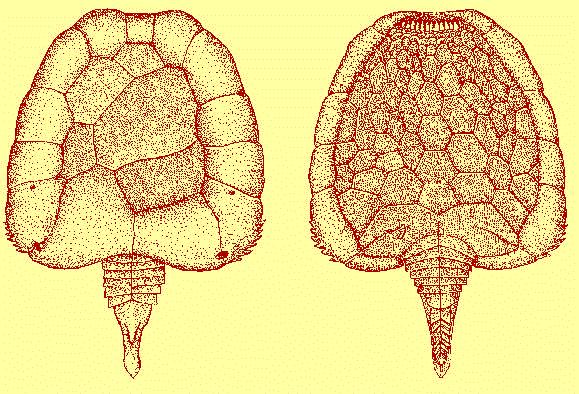
Mitrocystites
(drawn by
V. Petr)

Mitrocystites
(drawn by
V. Petr)
This beautiful "carpoid" from the Bohemian Ordovician (esp.
abundant in the Sarka Formation) is drawn in a position as a "calcichordate" but
interpreted as being an echinoderm with typical echinoderm skeleton and having
even an aulacophore (bottom), not a "tail". The "Aulacophore
Hypothesis" of Georges Ubaghs and Ronald Parsley is accepted here rather
than the "Calcichordate Hypothesis" of R. P. S. Jefferies because it
seems that practically all "carpoid" characteristics are clearly echinodermal,
not chordate. The superficial similarity may result simply from a peculiar
convergent evolution of both groups. An article published recently by Shu et al.
(1999) on the discovery of two distinct types of agnathans in the Lower Cambrian
of China (Chengjiang) is possibly one of the best arguments for the "Aulacophore
Hypothesis".
|
|
|
|
|
|
|